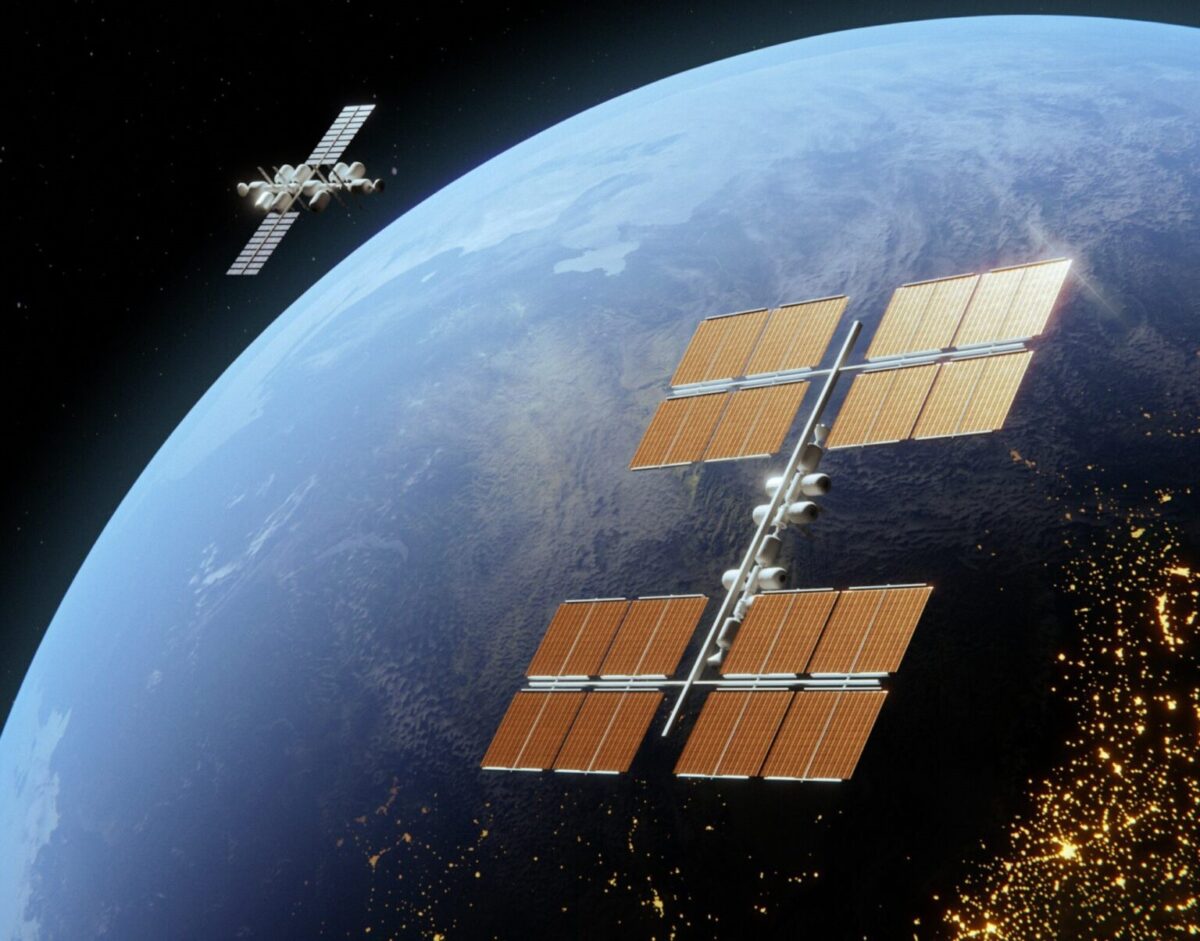From pv magazine USA
Arizona-based Solestial said it has secured $849,954 for a second-phase Small Business Innovation Research (SBIR) contract from NASA. Solestial will develop 50 kW solar array wings with its ultra-thin solar blanket technology.
Solestial makes ultra-thin, low-mass, radiation-hardened solar blankets for the harsh conditions and restrictive weight requirements of space-based PV. The company said its 20-micron thick cells demonstrate above 20% efficiency.
The SBIR proposal, “Next Generation Silicon Based Solar Arrays for Space Stations and Other Permanent Space Infrastructure,” adds on to a $149,987 first-phase contract from January 2023. The contracts were made possible through a new pilot program, SBIR Ignite, that funds commercially viable technologies from US startups to support research, development, and economic growth.
The 18-month second-phase contract will support the collaborative development of spacecraft solar wings along with Opterus Research and Development. The contract includes plans for the development of an array and space-based testing.
“The private space stations and lunar bases of tomorrow will require a tremendous amount of power, and currently, there are no affordable and scalable space solar technologies that can accommodate this demand,” said Solestial CEO Stan Herasimenka. “Our affordable and low-mass solar blankets will help to overcome size, cost, and manufacturing limitations to power large-scale spacecraft and surface infrastructure.”
Opterus will integrate Solestial’s solar blankets with its patent pending Retractable-Rollable Mast Array (R-ROMA) deployable solar structure. The R-ROMA is a tensioned solar blanket array with double z-folding panels deployed by a single rollable composite boom. The partnership between Solestial and Opterus will marry the two technologies to overcome the size, cost, and mass limitations of existing solar array technologies.
Solestial stated intent to achieve 50 kW scale and 200 W per kg array-level specific power while reducing costs.
The French Alternative Energies and Atomic Energy Commission (CEA) independently validated the ability of Solestial’s ultrathin silicon solar cells to effectively anneal radiation damage under sunlight at 90 C. This means the cells essentially self-heal under radiation damage.
Solestial’s silicon solar cells open circuit voltage dropped by only 4% and maintained 96% of initial value after being exposed to radiation equivalent to 10 years in low Earth orbit.
The company has been developing its technology for over a decade, beginning its life in Arizona State University. It underwent a $10 million seed funding round in October 2022. The most recent SBIR Ignite contract marks the ninth such award received by the company, bringing total funding from NASA, the National Science Foundation, and the U.S. Air Force to nearly $4 million to date.
Solestial targets a 2025 launch of a manufacturing facility capable of producing 10 MW per year of solar blankets. Read more about pv magazine USA coverage of solar applications in space.
This content is protected by copyright and may not be reused. If you want to cooperate with us and would like to reuse some of our content, please contact: editors@pv-magazine.com.




By submitting this form you agree to pv magazine using your data for the purposes of publishing your comment.
Your personal data will only be disclosed or otherwise transmitted to third parties for the purposes of spam filtering or if this is necessary for technical maintenance of the website. Any other transfer to third parties will not take place unless this is justified on the basis of applicable data protection regulations or if pv magazine is legally obliged to do so.
You may revoke this consent at any time with effect for the future, in which case your personal data will be deleted immediately. Otherwise, your data will be deleted if pv magazine has processed your request or the purpose of data storage is fulfilled.
Further information on data privacy can be found in our Data Protection Policy.